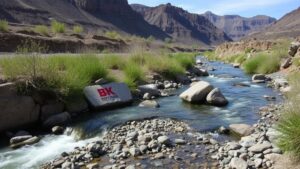Managing Water Usage Efficiently in Small Mining Operations
Managing Water Usage Efficiently in Small Mining Operations
Efficient water usage is a critical factor in the sustainability and profitability of small mining operations. With the increasing pressure on natural water resources due to environmental regulations and climate change, mining companies must adopt effective water management strategies. This article discusses best practices for managing water usage in small mining operations, explores important technologies, and highlights case studies to provide insight into practical applications.
The Importance of Water Management in Mining
Water is an essential resource in the mining process, playing a vital role in various operations such as ore processing, dust suppression, and equipment cooling. But, the mining sector is often criticized for its high water consumption and potential for contaminating local water supplies. According to the World Bank, mining operations can consume between 1,000 to 5,000 liters of water per ton of ore processed. This staggering volume underscores the necessity of implementing efficient water management practices.
Water Usage Challenges in Small Mining Operations
Small mining operations may face unique challenges when it comes to water usage, including:
- Limited Resources: Smaller-scale operations often lack the financial resources and infrastructure to implement advanced water management systems.
- Regulatory Compliance: Increasing environmental regulations require adherence to water quality standards, which can be difficult for smaller companies to meet.
- Geographic Limitations: Many small mining operations are located in remote areas where water availability is limited, making efficient usage paramount.
Best Practices for Efficient Water Management
To address the challenges of water management, small mining operations can adopt several best practices:
1. Water Recycling and Reuse
Useing water recycling systems can significantly reduce overall water consumption. For example, mining operations can treat and reuse water from tailings storage facilities or wastewater streams. A study conducted by the Environmental Protection Agency (EPA) indicates that recycling can reduce water intake by as much as 60% in certain mining contexts.
2. Rainwater Harvesting
Considering geographical factors, small mining operations can set up rainwater harvesting systems to capture and store rainfall for operational use. For example, the small-scale Kasbah Resources project in Morocco successfully implemented a rainwater harvesting system, which provided substantial amounts of water for processing, significantly alleviating the pressure on local aquifers.
3. Efficient Irrigation Methods
Using advanced irrigation technologies, such as drip irrigation, can minimize water waste during dust control and vegetation management. This not only saves water but also reduces the need for additional water resources.
4. Monitoring and Data Analytics
Modern technologies are pivotal in managing water usage efficiently. Small mining operations can utilize remote sensing and real-time monitoring systems to track water levels, quality, and usage patterns. For example, sensors deployed at a mining site can provide continuous data, allowing operators to adjust usage based on actual needs.
Technological Innovations in Water Management
Technological advances have introduced various tools to help small mining operations improve their water management practices:
- Water Management Software: By using data analytics platforms, companies can analyze consumption patterns, forecast needs, and optimize usage.
- Desalination Technologies: For operations near saline water sources, desalination can provide a viable water supply, although it requires significant energy input.
Case Studies
The Kumtor Gold Mine, Kyrgyzstan
The Kumtor Gold Mine implemented a comprehensive water management program that included water recycling and monitoring systems. As a result, they reduced their overall water usage by 30% over five years while maintaining compliance with environmental regulations. Their practices serve as a benchmark for small to medium-sized mining operations seeking to enhance their water sustainability initiatives.
The Mount Peake Project, Australia
The Mount Peake Project utilized rainwater harvesting and recycling practices, which provided 80% of their water needs for processing. This approach not only minimizes operational costs but also mitigates the environmental impact on the local water supply.
Conclusion and Actionable Takeaways
Efficient water management in small mining operations is not only an environmental necessity but also a strategic advantage. By adopting practices such as water recycling, rainwater harvesting, and utilizing advanced monitoring technologies, small-scale miners can optimize their operations while ensuring regulatory compliance and sustainability.
Actionable takeaways for small mining operations include:
- Conduct a water audit to assess current usage and identify areas for improvement.
- Invest in water recycling systems to diminish dependence on fresh water supplies.
- Use continuous monitoring systems to track water consumption and quality.
- Explore partnerships with technology providers to enhance water management capabilities.
Emphasizing efficient water management can lead to not only operational benefits but also a positive reputation within the industry and the surrounding community.
